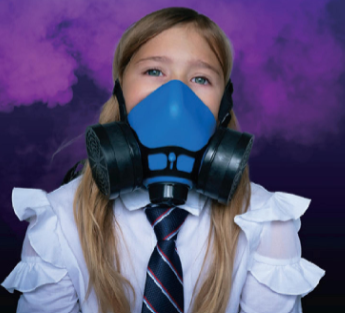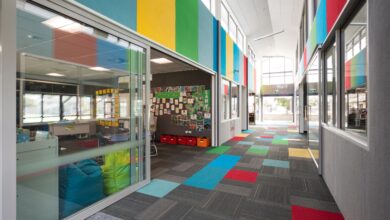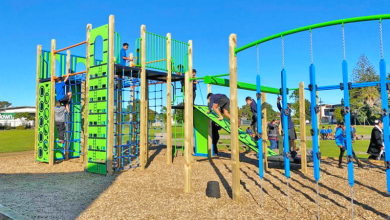Is indoor air quality plaguing our schools?

Effective ventilation has never been more of a necessity in schools.
While it is widely known that crowded, poorly aired classrooms provide a breeding ground for germs that cause many common illnesses, the advent of the Delta variant of Covid-19 has added a new layer of seriousness to the ventilate debate.
Schools have become one of the main locations of interest, globally, where spreading the virus is concerned¹. Here in Aotearoa, children (0-19 years) in the 2021-22 Delta outbreak represent the largest proportion of Covid-19 cases (37% of cases, from 16 Aug to Jan 24 2022). Large outbreaks have affected school communities, with the Marist College cluster generating 96 cases.
Now, more than ever, to safeguard the health of your students and staff you must pay strict attention to the air your people, particularly your young people, breathe.
“School aged children have greater susceptibility to some environmental pollutants than adults because they breathe higher volumes of air relative to their body weight, and their body tissue and organs are actively growing,” according to the Indoor Air Quality and Thermal Comfort research paper².
“Children also spend more time in school than in any other environment except home. Indoor air quality is dependent on the concentrations of CO2 and other respiration derived pollutants, volatile organic compounds (VOC), particulate matter and other pollutants such as formaldehyde.”²
Levels of carbon dioxide (CO2) rise as people breathe, where spaces are poorly ventilated, and research has linked CO2 levels to educational outcomes. ‘Indoor air quality and thermal comfort have a direct impact on the usability of the space and on learning outcomes.’²
Prolonged exposure to poor air quality, wherein the CO2 levels exceed these levels can result in headaches, poor concentration, restlessness, nausea and sleepiness.
Research suggests that normal urban atmospheric concentrations range from 450-600 ppm. In most New Zealand classrooms, CO2 levels fluctuate. “It is expected that the summer range of CO2 levels will vary from approximately 400 ppm to 1,000 ppm over the course of a day.”²
The Ministry of Education confirmed it ordered 2500 portable CO2 monitors in December, to be issued to schools across the country in term 1 this year. This will enable schools to self-assess air quality, particularly important since the arrival of the highly transmissible Omicron variant on our shores in January.
Ventilation, when needed, can be provided naturally or mechanically. “Wherever practical, natural (passive) or semi-natural (passive) ventilation is preferred by the Ministry, provided minimum requirements in terms of pollutant control, and temperature level stability and control, are met.”²
What ventilation is suitable for each school will vary depending on a school’s size, occupancy, acoustics and more. Solely mechanical ventilation is suited to internal rooms or where acoustic requirements don’t allow for natural ventilation.
Not only can you maintain good indoor air quality by providing suitable ventilation but selecting low VOC building materials, ensuring a hygienic cleaning regime, and using entry/exit mats to capture dust and dirt before they are brought into the building.
Industry Interview:
School News talks to Air Climate Evolution representative, Simon Wilkinson. Simon spoke with us about the increased emphasis COVID concerns have caused schools to place on air quality solutions.
Q: What are some pros and cons to new air care technologies and/or systems for schools?
A: The cons are that, due to COVID, the market is flooded with products making claims of removing viruses from the air. However, buyer beware that many of the claims are unproven or tested only in a laboratory and not in a real-world application.
Many of these products produce secondary harmful contaminants, or in the case of independently tested HEPA-filter units, their efficiency on capturing particulates the size of aerosolised COVID-19 droplet nuclei or larger is significantly less than the manufactures claims.
The pros are that new generation high output UVC technology is scientifically proven to inactivate virus, bacteria, and mould and available for retrofitting into air conditioning systems or standalone options.
Q: What is the recommended safe level of CO2 in the classroom and how can this be measured using technology?
A: Typical guidelines look for 1000ppm or less. CO2 can be measured and monitored by a CO2 meter fitted within the classroom. When levels increase, the only way is to purge the classroom air by introducing outside air through the air conditioning system, ventilation fans or opening windows. This can bring in outdoor air pollutants such as mould, bacteria, or VOCs. The introduced air can be treated by installing a high output UVC in the air conditioning system.
Q: Are there scaled design options that can offer schools strength, safety and comfort year-round?
A: Most school classrooms are air conditioned so the most cost-effective and performance proven solution is fitting it with UVC technology to improve indoor air quality. This also has the potential to provide maintenance and energy savings, providing a genuine return on investment. If the classroom does not have air conditioning, then portable air purifiers are available with high output UVC and high efficiency filters.
Due diligence is a must in all cases.”
¹ Georgia public health officials: Most COVID-19 outbreaks now in schools – Helena Oliviero, The Atlanta Journal-Constitution, Sept 15 2021.
² Indoor Air Quality and Thermal Comfort, Ministry of Health, 2017
³ Community case demographics – cases reported since 16 August 2021, Ministry of Health, as at January 24 2021









